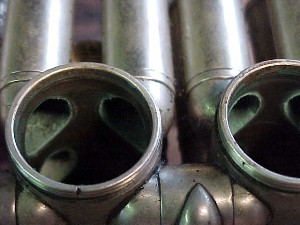
With the completion of all necessary dent work, we are now ready to focus our attention on the refitting of the rotorary valve assembly.

Before any mechanical work can begin, a thorough cleaning of the valve casings, rotors and bearings must be done.
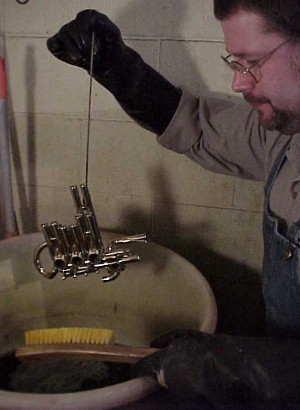
In order to thoroughly clean valves, relatively strong caustic chemicals are used. Large vats containing de-oxing compounds and others containing chromic acid are employed. After immersion in these chemicals, the parts are thoroughly washed, then immersed in a de-activating bath, and finally rinsed. This ensures the removal of heavy calcium deposits and oxidized materials.
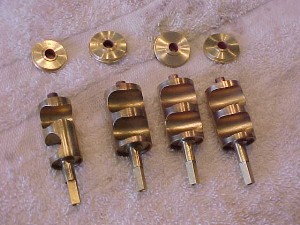
Now that we have completely cleaned the valve assembly, and the rotors have been brushed to a nice, bright finish, we are ready to start with the refitting of rotors and bearings.
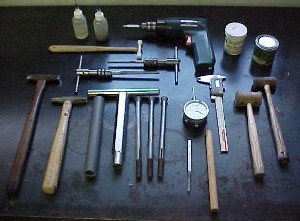
Pictured above are most of the hand tools required to perform the average rotor valve refit. Everyday tools such as mallets, hammers, and oil, and not so everyday tools, such as reamers and shrinking collets, must be employed in order to perform this detailed task.
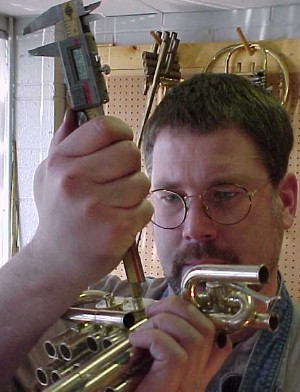
Precision is of the utmost importance when performing any kind of valve repair work. In this image, Fritz is measuring the amount of hop the rotor has between two bearing surfaces.
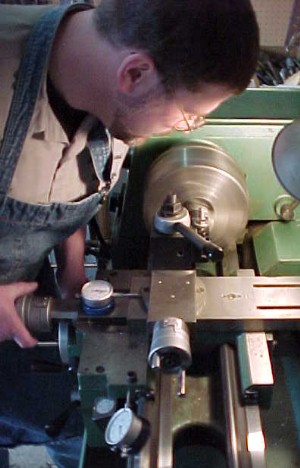
Now that the amount of hop has been determined, that amount is removed from the top bearing using a metal turning lathe. This procedure is rather touchy and must be performed with great care. Tolerances must be less than one thousandth of an inch clearance!
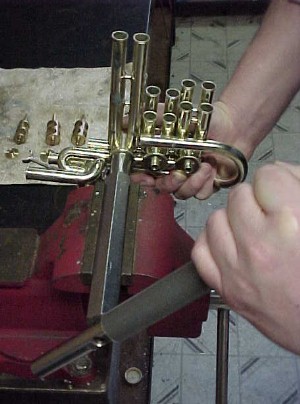
Once the hop has been removed, the endplay on the rotor bearing stems must be eliminated. A special bearing collet-shrinking tool is required to perform this process, not to mention a great deal of time, as well.
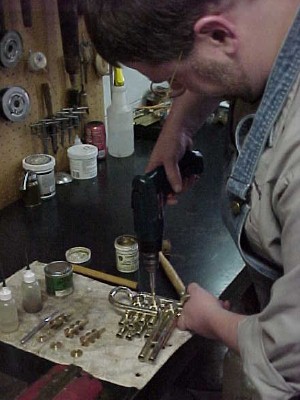
Now that all the endplay and hop has been removed, the rotors are a little too tight. At this point, the bearings and valves will be lapped to the proper final fit. In this process, a grease and mild abrasive mixture are applied to the bearing points and the valve is worked using a drill motor. The lapping compound, as we call it, removes very small amounts of excess material from the bearing, bringing it to a final, smooth fit, just enough clearance, but not too much.
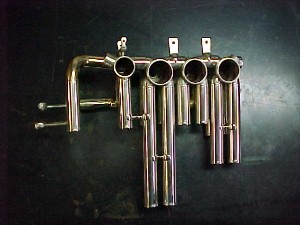
With the completion of the rotary fit, all bearings and rotors are cleaned of any residual lapping compound. We are now ready to begin the reassembly of the french horn, shown in Part 3.